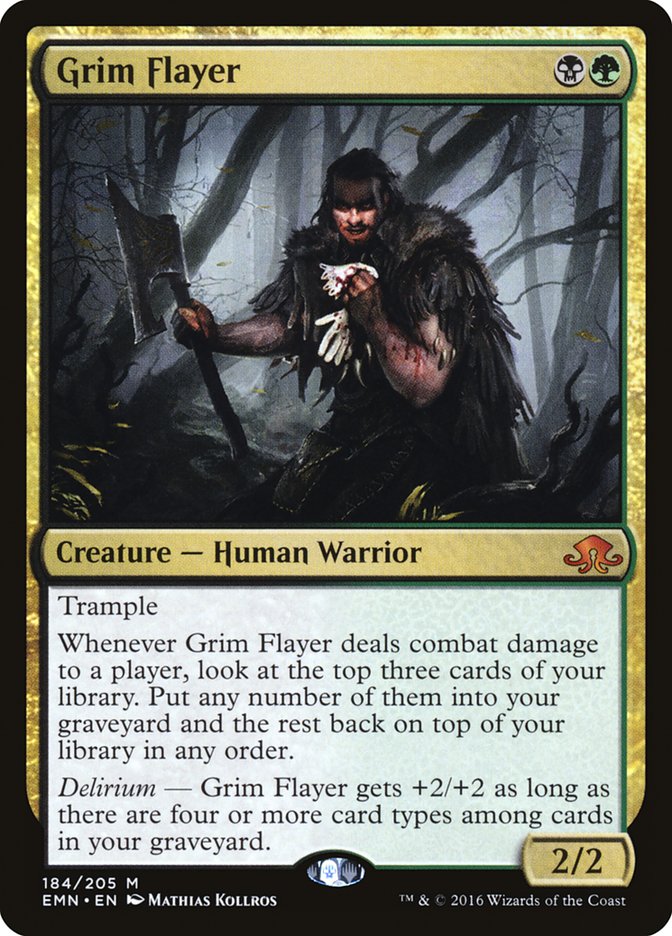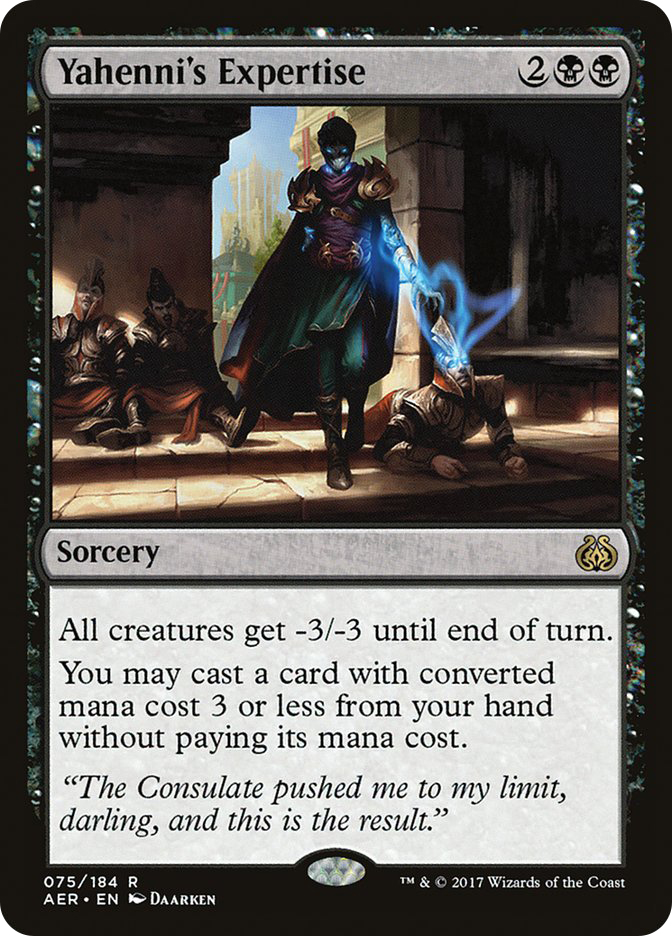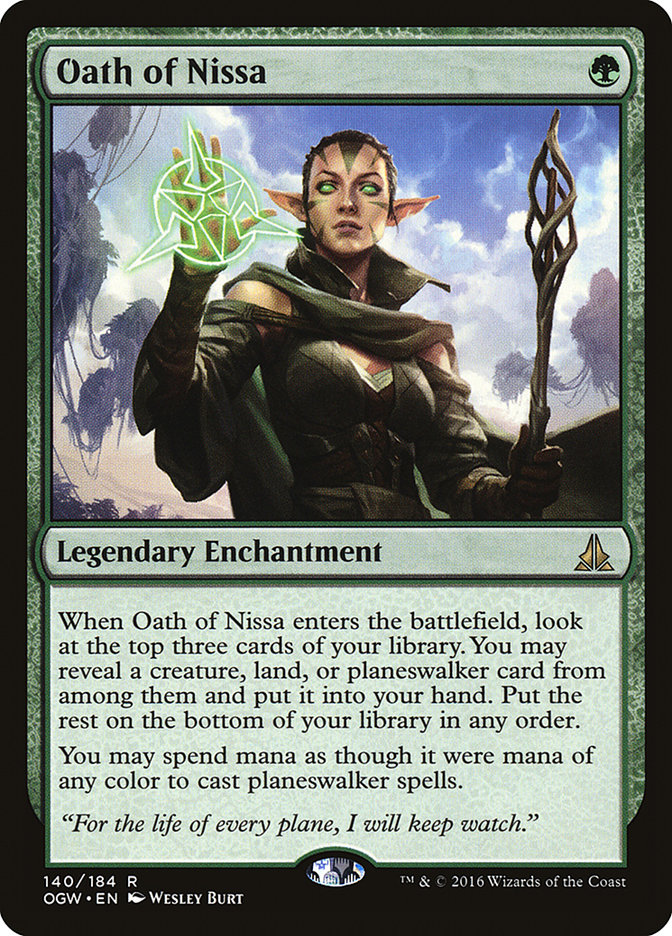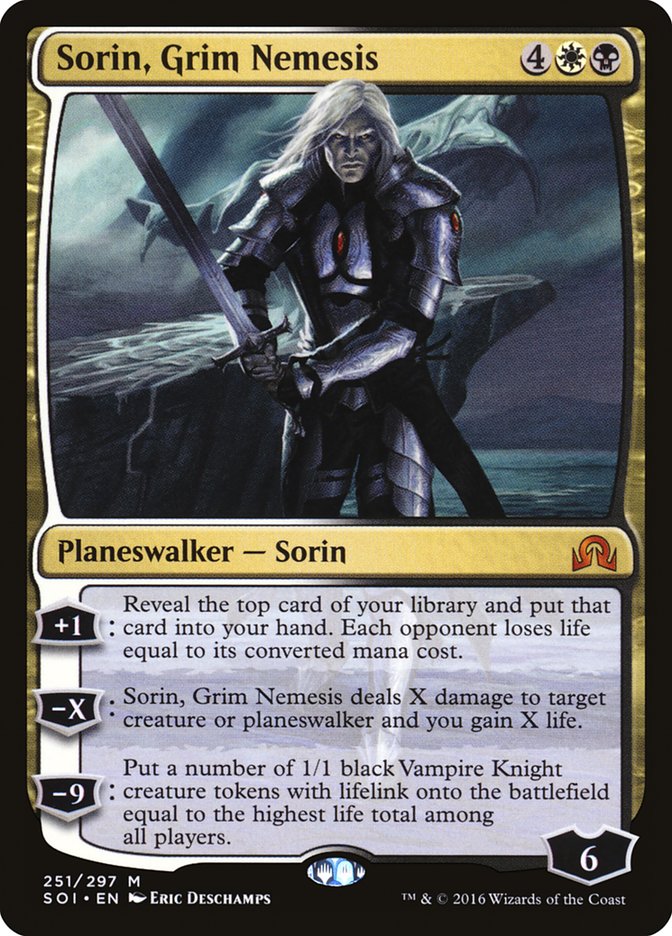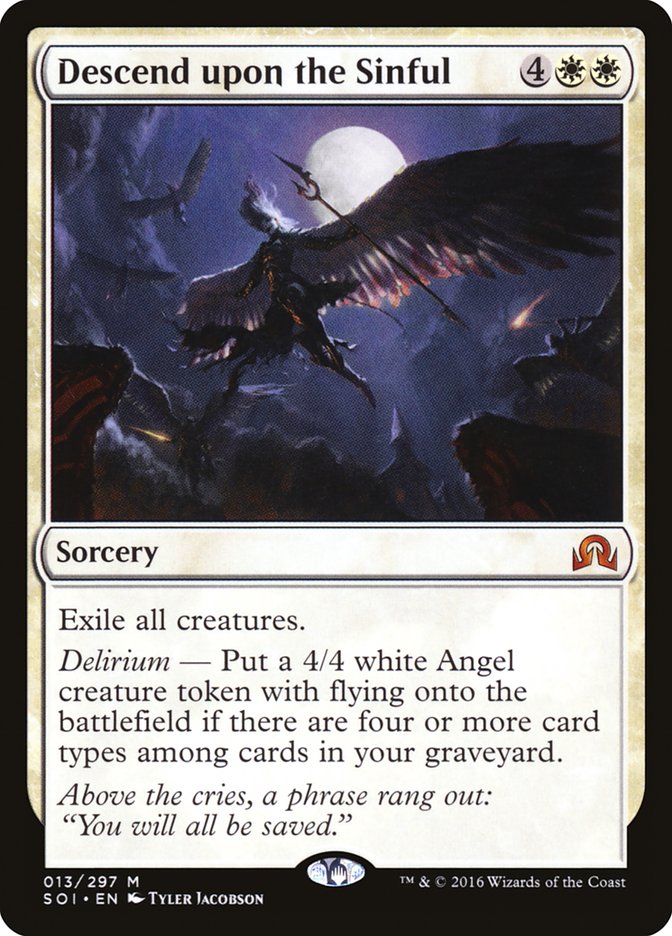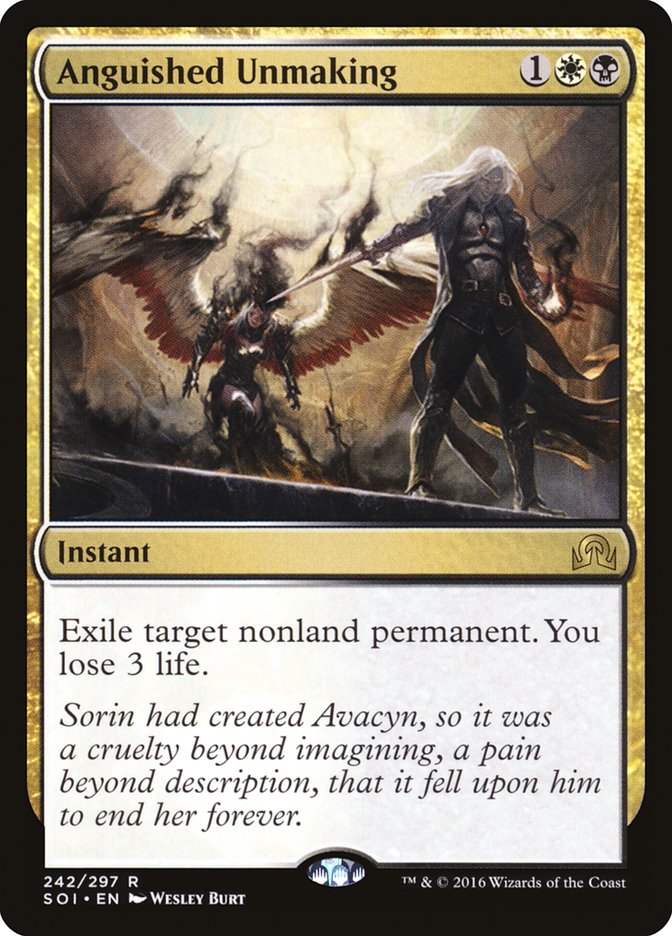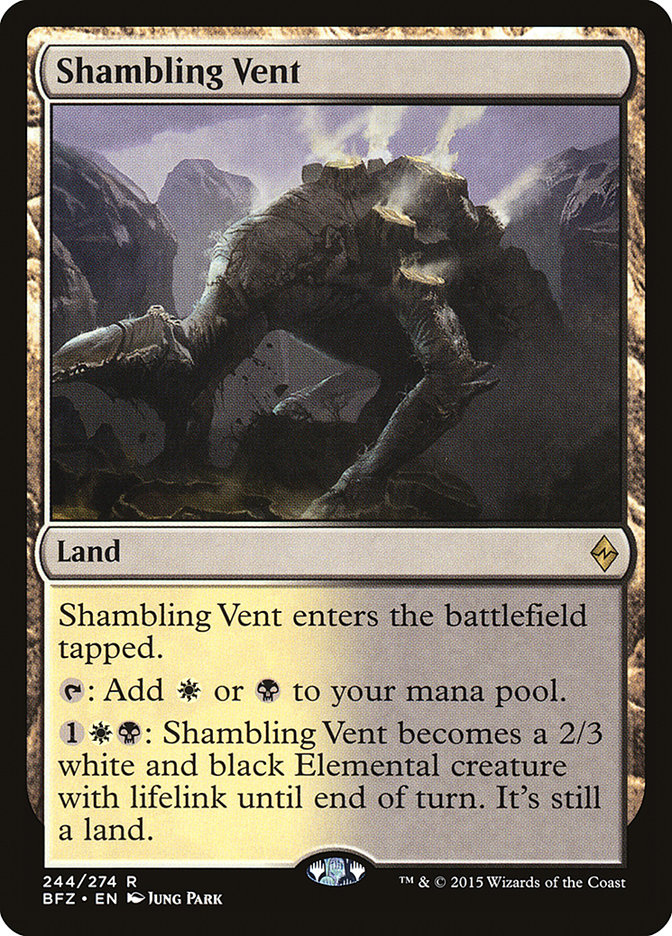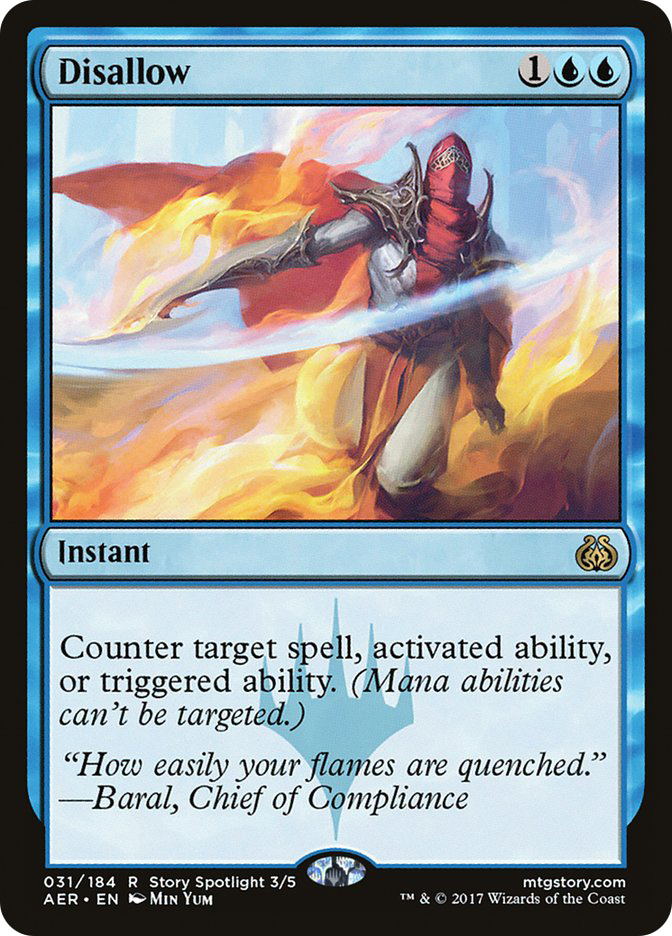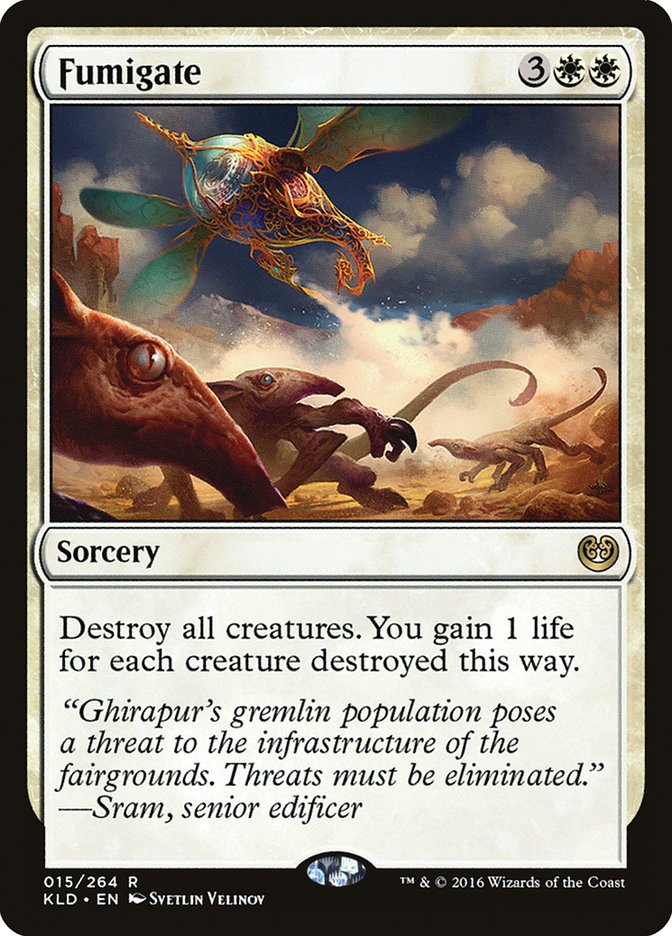Standard is at its peak, my friends. There are so many viable decks that choosing one for this weekend is much more difficult. Control has the tools to defeat both combo and slower decks, with ease. One of the control options I posted recently was a U/B list, which looked very similar to the deck Jim Davis battled with.
Creatures (5)
Planeswalkers (1)
Lands (27)
Spells (27)

U/B Control has a fantastic draw-go gameplan; however, depending on Torrential Gearhulk to win every match can be a perilous strategy. Control is at its strongest with the inevitability of Sphinx’s Revelation, Aetherling, or powerful planeswalkers, but can be defeated after a few resolved 5/6s. I have put up decent numbers even with the lack of diversity in the win condition column, and now I have been tinkering with other methods to push us across the finish line.
This is not going to win the game for you.
I broke down the different roads that we could take control down in the new Standard, but left out one important viable archetype. B/G Delirium treated me pretty well in the final month of pre-bannings, so I revisited it a few days ago. The power of Ishkanah, Grafwidow is still quite strong, and it poses a real problem to Mardu Vehicles, white-based aggro, and even G/B Aggro.
G/B Aggro is the most resilient to the Spider army; however, four creatures in one is enough to make effective blocks while using powerful spells to back it up. Losing Emrakul, the Promised End put a kibosh on the looming, eventual victory that B/G Delirium had over every deck in the format, but the deck can still easily grind victories. B/G Delirium is not the most exciting deck to play in the gauntlet of Standard, but the cards still line up quite well against the new metagame.
Creatures (13)
Planeswalkers (4)
Lands (23)
Spells (20)

B/G Delirium uses the least amount of new cards out of the decks I’ve crafted. The skeleton of the deck is relatively the same, using the powerful delirium cards of old to accomplish the same mission. Emrakul, the Promised End isn’t the reason why B/G Delirium was as powerful as it was.
Grim Flayer is still a powerhouse that sees abundant play in Modern, consistently moving into the 4/4 body that is very difficult to defeat in combat. Grim Flayer also has the defense of Fatal Push now, which punches it through early blockers with ease. There was a school of thought before that suggested the best strategy was to cut all copies of our only two-drop on the draw, accusing it of being too weak and slow when not going first.
I never bought into that blasphemy, and still do not.
Grim Flayer is the reason I developed and played B/G Delirium at Pro Tour Eldritch Moon, picked it back up for the SCG Tour prior to bannings, and is the main reason I now think it is one of the top options for those of us who enjoy a good game of interactive Magic. Ishkanah, Grafwidow is the obvious choice for MVP, but my experiences with Grim Flayer make it a special card in the deck. Both creatures are the bread and butter of the deck, still legal, and now are joined with powerful sideboard options that make the aggressive decks much less threatening.
The big changes I made to the deck for this weekend were in the sideboard, but some maindeck numbers shifted.
Fatal Push and the fourth Liliana, the Last Hope were added to the maindeck to enhance Grim Flayer and defend the early-game. The sideboard toasts aggressive decks with Yahenni’s Expertise, and having four Liliana, the Last Hope is vital for that reason as well.
Yahenni’s Expertise is a much more powerful spell in B/G Delirium because of the amount of available spells to cast for free upon resolution. We can toss a threat onto the battlefield, finish a larger creature off, dig some with a Grapple with the Past, or pretty much use any spell in the deck at our leisure.
That dynamic is joined with the triumphant return of Kalitas, Traitor of Ghet, which is no longer afraid of deadly Reflector Mages destroying it with tempo power. Tireless Tracker and To the Slaughter saw increases to help against control/combo decks, which naturally got more difficult with the bannings. The B/G Delirium deck lost its inevitability with Emrakul, the Promised End, but adapts quickly as a “Rock”-style deck that can tango early-, mid-, and late-game with the best of them.
The hardest deck for B/G Delirium or control in general is the Aetherworks Marvel deck of old. Without Emrakul, the Promised End, there isn’t a deck with inevitability that can knock us out in the final round like before. The results of Columbus didn’t surprise me outside of the creativity that Four-Color Saheeli Combo displayed.
Using Oath of Nissa is a really sweet way to bring in some very powerful cantrips for Felidar Guardian to target with its enters-the-battlefield ability. I think that the different variants of the combo deck have the most promise to dominate Standard, starting with the upcoming Pro Tour; however, the slower decks are not that disadvantaged to any of the available versions.
I playtested many matches using Jeskai Saheeli, tweaking different cards here and there, and I was impressed with the results. What I was not impressed with was the inability to consistently win against aggressive decks holding an Unlicensed Disintegration after resolving a few early threats. The games were very split; some I just combo easily, and in the others they are holding a Shock and Grasp of Darkness to dash my hopes at instant speed. These types of decks I really like for Pro Tours, where aggro is at its lowest point, but for this weekend in Richmond, I will be playing something more my style.
Creatures (3)
Planeswalkers (7)
Lands (26)
Spells (24)

Last time, we looked at U/B Control and I recognized the power of the simple two-color combination. Having to deal with resolved enchantments and artifacts is a thing of the past, so there isn’t a huge gap in the U/B Control gameplan. I mentioned the issue with U/B was difficulty it had sealing the deal, so my obvious pivot was to Esper Control.
I discussed some different options in my previous article, and Esper Control was on my short list of options for this new format. I finally have a list that I’m proud of and that has been doing quite well against most decks outside of Mardu Vehicles. It’s especially strong against G/B Aggro. This list contains the best white has to offer control with Anguished Unmaking, Descend upon the Sinful, and Sorin, Grim Nemesis. Sorin, Grim Nemesis is the answer we need to slam the door shut on most decks due to its ability to gain a huge amount of life alongside win condition modes. The loyalty of Sorin, Grim Nemesis is high enough to withstand a hit from most threats, and when followed up with a powerful sweeper like Descend upon the Sinful, the game is put out of reach for many of our opponents.
The white doesn’t put much of a strain on the manabase. Adding Shambling Vent is a huge boost to the Esper Control plan as well. Patrick Sullivan made regular references to the weakness of Jim’s manabase because he didn’t have access to creature-lands like his colleagues playing U/R Control. We, as control players, do look awfully silly losing the game after stabilizing in the late-game against an opponent, only to fall after five or six draw steps due to a lack of pressure.
This weekend leaves me with a very difficult decision, but I know I’ll be using a deck with some creature-land. The rest of the manabase is tailored for the equal splash on both sides. I never need double of blue or white outside of the late-game win conditions of Torrential Gearhulk and Descend upon the Sinful. This allows for a smooth manabase that is centered on a double-black removal suite. The lands tend to enter the battlefield untapped, thanks in part to Concealed Courtyard, Choked Estuary, and a good amount of basics. Mana is truly the only barrier preventing control mages from adding an additional color, and reaping the benefits from it.
This manabase can be altered to incorporate double-colored options if need be, but Transgress the Mind has been a powerful alternative to the countermagic requirement. Tap-out control has the tools to be successful even in a field of instant-speed combo decks because of the hand disruption and powerful removal spells. Anguished Unmaking, Grasp of Darkness, Fatal Push, and Murder are all capable of handing the most difficult threats in the early- and late-game.
The popularity of G/B Aggro is about to explode, and this weekend you all will see it in droves. The biggest weakness of G/B Aggro is true battlefield sweepers, which Esper Control has access to. One Descend upon the Sinful on turn 6 is enough to send a G/B Aggro opponent to the next round with an additional loss because they require heavy battlefield presence to kill us. When they begin their assault too carefully, spot removal picks them off, but when they go too wide, Descend upon the Sinful (or Fumigate if you’re into that kind of thing) will punish them.
In an effort to improve the win condition power of Esper Control, I added another copy of Torrential Gearhulk initially. I don’t have a ton of instants to work with in this tap-out version, so I only brought one into battle with me in the early testing rounds. I found that the lack of late-game power that control decks are famous for was costing me match after match. The number of Torrential Gearhulks is at three now, but since we have access to Oath of Jace;,I can easily see that number going to four if need be.
Torrential Gearhulk, Descend upon the Sinful, and Sorin, Grim Nemesis constitute a large number of expensive spells, but the ability to ditch them early when the hand is cluttered allows us to have a deep pool of win conditions at the end of the curve. I know it may be tough to believe, but I really wanted to use lower-cost spells to keep the curve manageable, but that simply isn’t an option. Creatures are too good these days, and if we want to defeat them, we have to play our powerful creature in multiples.
Liliana, the Last Hope rewards us for playing more creatures, and also delirium has some relevance for us in order to get maximum value out of our Descend upon the Sinful. The power of Pick the Brain in the sideboard is another bonus for achieving four different card types in the graveyard and saves us from having to play multiple copies of Lost Legacy. The main reason I don’t deploy many copies of Lost Legacy in these two decks is because the Saheeli Combo deck can win without the pieces fairly easily with their critical mass of planeswalkers, and Pick the Brain can do the same job more efficiently.
This is a tough choice to make for this weekend, and I honestly don’t know which one I’ll choose. I know Esper Control is in my blood, but the power of B/G Delirium is still very, very strong. Good luck this weekend, my friends, and I’ll see you all there!



